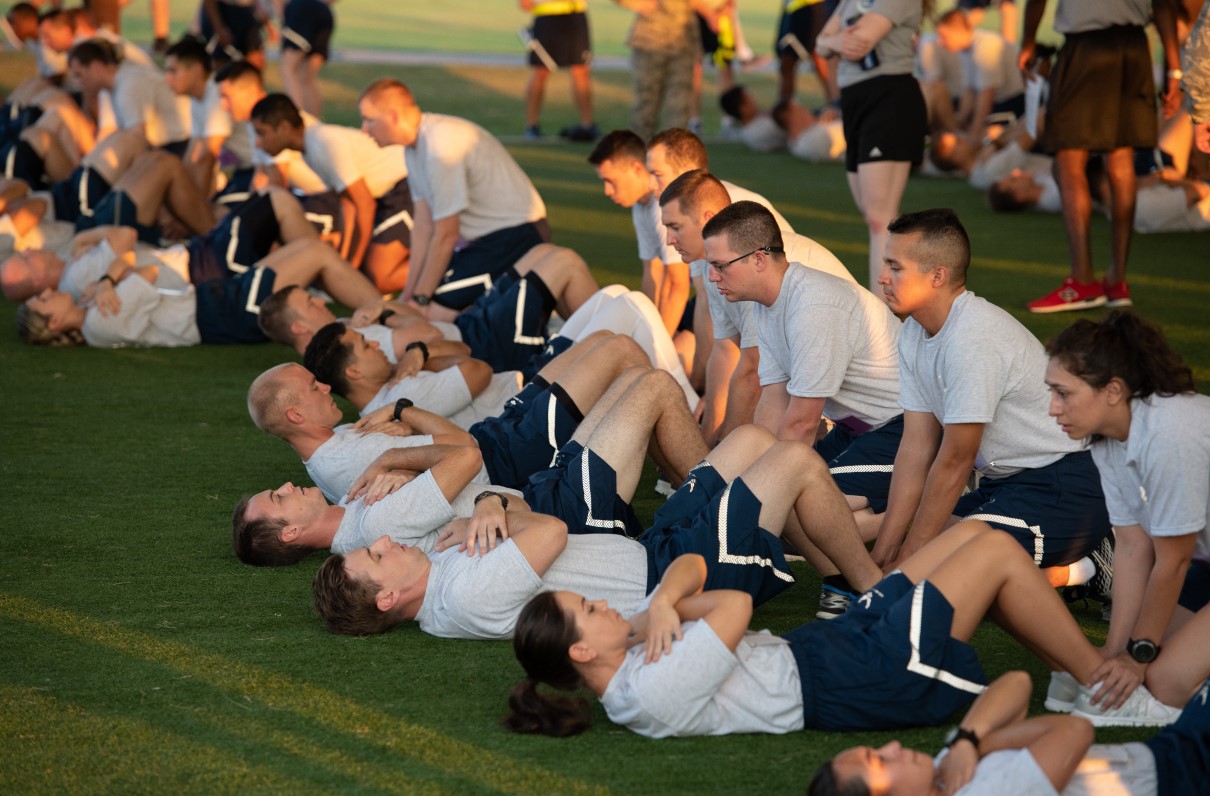Editor’s note: This article by Thomas Novelly originally appeared on Military.com, a leading source of news for the military and veteran community.
When the Air Force decided to drop the dreaded tape test from its fitness assessment in 2020, airmen rejoiced at replacing what many critics viewed as an outdated body standard.
And while a replacement for the body measurement has not officially been announced, a leaked document circulating online shows that a more lenient and simple standard may take its place.
In February, images posted to the unofficial Air Force amn/nco/snco Facebook page showed charts and emails laying out how a new test called the "waist-to-height ratio" could be put in place as soon as this summer.
The email, which does not identify a command or officer giving the guidance, says that the new equation would not be part of a physical fitness test, but would be a separate assessment done frequently within an airman's squadron.
[RELATED: Army’s New Fitness Test Might Become Official This Year, Leaked Plan Says]
Lou J. Burton, a spokesman for the Air Force Surgeon General's office, confirmed the service is "developing policy for the Waist-to Height Ratio" but declined to validate the authenticity of the emails.
"The Air Force acknowledges both body composition and physical fitness contribute to overall health and wellness," Burton said in an emailed statement. "Any documents published online are pre-decisional and subject to change."
This past November, when changes to the Air Force physical fitness test were announced, the service said the surgeon general recommended the waist-to-height ratio as the best method for assessing body composition.
In December 2020, the Air Force became the first service branch to ditch the waist measurement portion of the physical assessment. Since then, the Army also began taking a hard look at the tape measure test, which has been used to measure a person's body mass index since the 19th century.
That assessment is done by using a tape measure to compare height to circumference measurements around the hips, abdomen and neck to determine overall body fat.
Stew Smith, a former Navy SEAL and fitness author certified as a Strength and Conditioning Specialist who writes a column for Military.com, said the simplicity of the new equation could help airmen focus on other areas of physical fitness.
[CURRENTLY SERVING?: Take MOAA's Blended Retirement System Survey]
"The older height weight measurements were outdated," Smith said. "This is a better math equation than what they had previously, and it seems like this one may be more lenient."
The Space Force currently follows Air Force physical testing standards. But the newest service branch is hoping to create its own fitness assessment, which likely will be significantly different from the others.
Chief Master Sgt. Roger Towberman, the Space Force's highest-ranking enlisted leader, has repeatedly told Guardians during town halls that the service wants to take a "holistic" approach to fitness, focusing more on overall wellness and health than just passing a test.
"I think we'll get some physical fitness answers here very soon," Towberman said in a Feb. 10 town hall streamed on Facebook. "And the holistic health assessment answers continue to be worked."
Towberman said a decision brief has been passed off to Gen. John Raymond, the service's chief of space operations, but it is not clear when details will be released to Guardians.
Raymond has spoken publicly about wanting the physical fitness standards for Guardians to be different from the other branches because the Space Force's mission is different and its members won't be as heavily deployed compared to the Army and Marine Corps.
Smith added that different standards for the Space Force will likely help retain and recruit highly academic talent.
"You may have a candidate who has some serious technical skills but who may not be comfortable doing demanding physical work," he added. "If you consider it more of a health and wellness test, then it will likely be more successful for them."
Support MOAA Charities
Your generosity will benefit the work of The MOAA Foundation and MOAA Scholarship Fund. Click for details.
